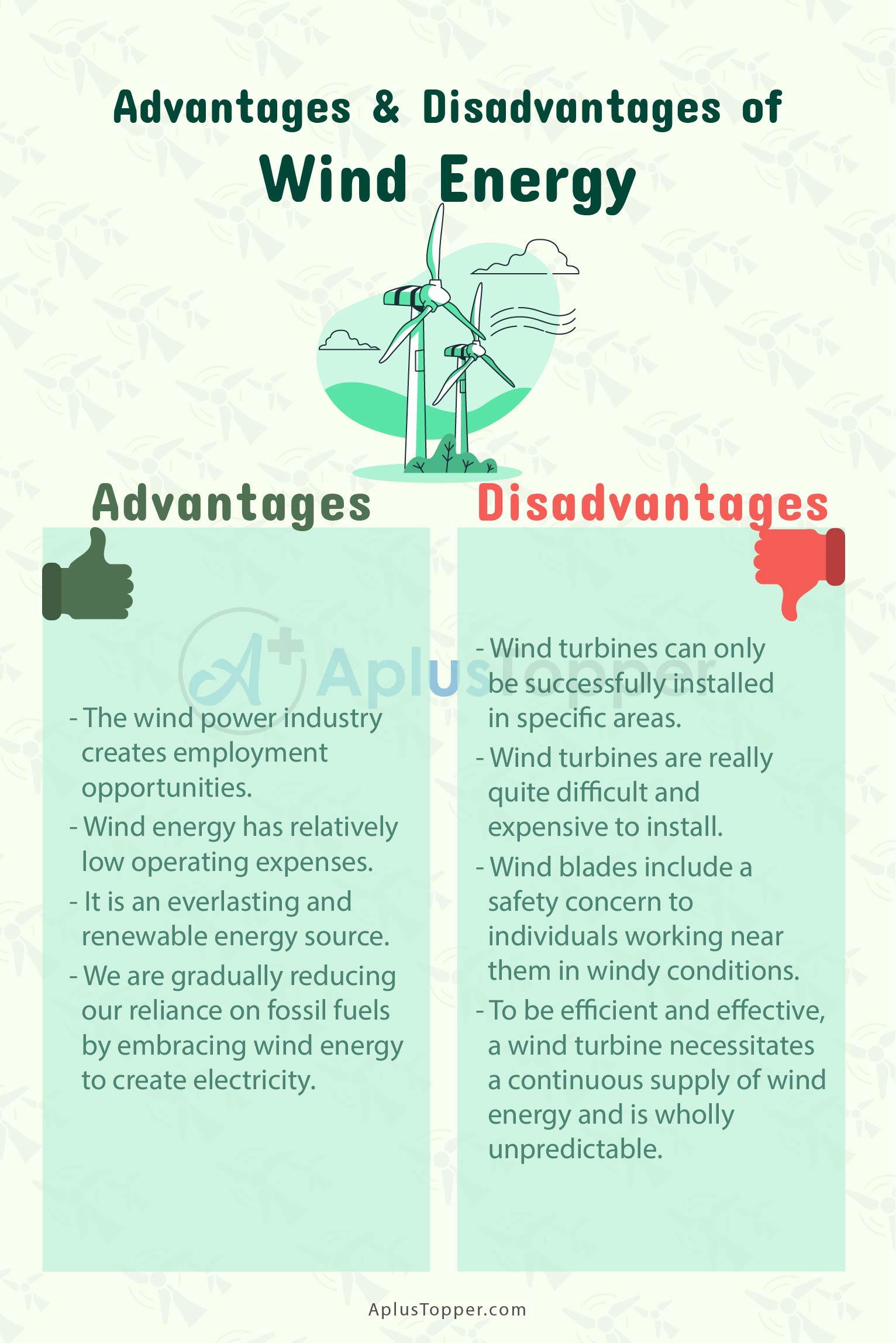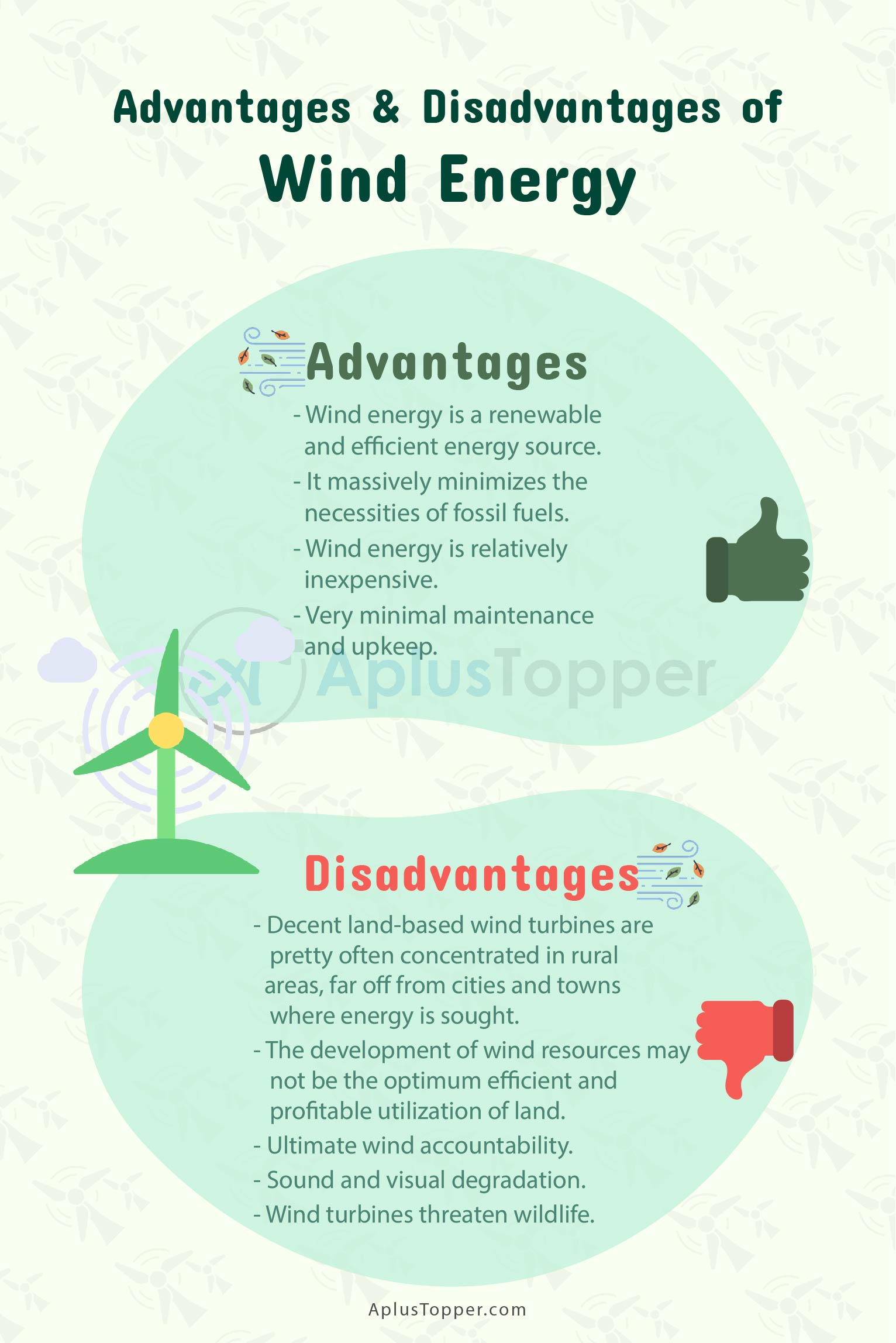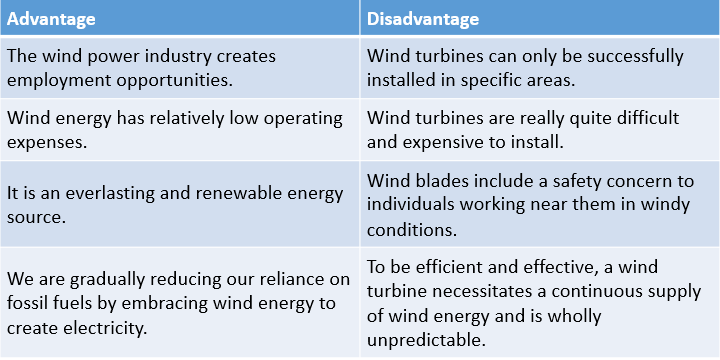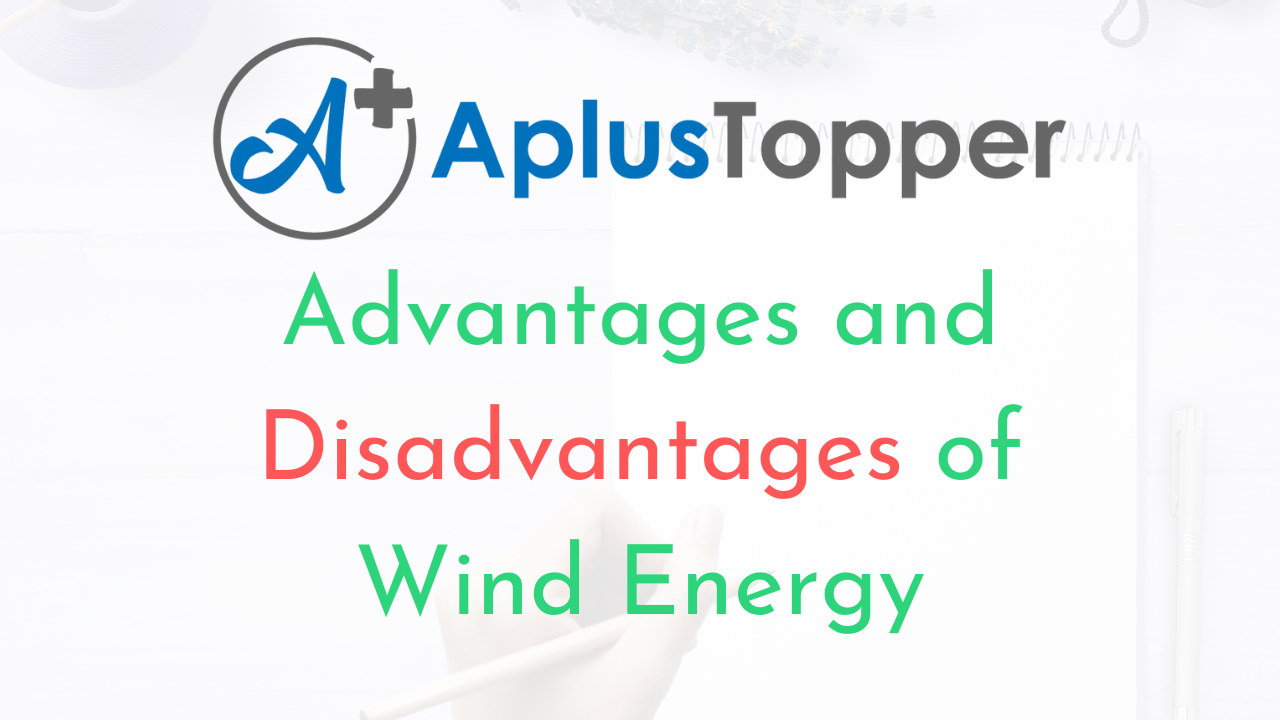Advantages and Disadvantages of Wind Energy: Wind power is a clean and green energy source that is healthy, affordable, and conveniently abundant. Wind farms capture the wind’s energy and turn it into electricity each day everywhere around the globe. Wind power generation is becoming particularly important in running our planet — in a clean, responsible fashion.
Then how does wind energy come into being? Wind turbines enable us to leverage the wind’s power and convert it into electrical energy. When the wind is blowing, the blades of the turbine turn clockwise direction, generating energy. This permits the wind turbine’s primary shaft to turn, which is coupled to a gearbox within the nacelle. The wind energy is processed to electricity by the gearbox, which transmits it to the generator. The power is then sent via a transformer, where the voltage levels are modified to meet the grid.
Students can also find more Advantages and Disadvantages articles on events, persons, sports, technology, and many more.
What is Wind Energy? Advantages and Disadvantages of Wind Energy 2022
Everything that moves possesses kinetic energy, and scientists and researchers are leveraging the wind’s kinetic energy to generate electricity. Wind energy, also widely known as wind power, is manufactured by employing a wind turbine, which is a structure that captures the strength of the wind to create power.
The wind propels the turbine’s blades, which are joined to a rotor. The rotor then spins a generator, which generates electricity.
Once manufactured, power can be consumed, linked to the electrical grid, or store for future consumption.
- Advantages of Wind Energy
- Disadvantages of Wind Energy
- Comparison Table for Advantages & Disadvantages of Wind Energy
- FAQs on Pros & Cons of Wind Energy

Advantages of Wind Energy
When we speak about wind energy, we’re talking about the power that is green, inexhaustible, cost-effective and has a negligible impact on the ecosystem. Let us go through some of the most significant advantages of wind energy.
- Wind energy is a renewable and efficient energy source: Wind Power is a renewable and sustainable energy source. This will never run out, contrasting fossil fuel reserves (such as coal, oil, and gas). Consequently, wind turbines are a credible alternative to effectively meet our potential energy needs.
- It massively minimizes the necessities of fossil fuels: The use of wind energy to generate power lessens the requirement for us to utilize fossil fuels. This not only cuts carbon emissions but also contributes to the environmental conservation of the world’s natural resources, which are in poor shape. As a consequence, fossil fuel reserves such as coal, oil, and natural gas will survive longer on average.
- Wind energy is relatively inexpensive: It is amongst the most affordable and accessible energy sources obtainable today. Wind energy minimizes the price volatility that fuel prices provide to conventional energy sources because electricity from wind farms is marketed at a specified price over a prolonged period of time (e.g., 20+ years), and its fuel is gratis.
- Very minimal maintenance and upkeep: Wind energy requires very little care. A new generation wind farm may operate for a great many years before requiring maintenance. You should really be conscious that each wave of wind turbines contributes to increased consistency.
Disadvantages of Wind Energy
- Decent land-based wind turbines are pretty often concentrated in rural areas, far off from cities and towns where energy is sought: Transmission lines must be constructed to link the wind farm’s energy to the metropolitan area. Building even just a small fraction of the already-proposed power lines, on the other hand, may tremendously bring down the cost of increasing wind energy.
- The development of wind resources may not be the optimum efficient and profitable utilization of land: Land appropriate for wind turbine construction must possibly compete with other land usages, which could be more valued than electricity production.
- Ultimate wind accountability: This renewable energy is based entirely on wind power, so this inexhaustible resource does not necessarily blow consistently over time. Additionally, wind turbines barely operate at 30% of their peak capability. As an outcome, if the weather conditions do not fully cooperate with your wind turbine, you will be unlikely to produce electricity using the turbines. As a reason, you will have to count on the local utility company for a moment. Another major downside is that if the winds get too fierce or a storm strikes, your wind turbine may incur considerable damage. The most potentially damaging and deeply unpleasant scenario that may actually occur during a storm is a lightning strike on your wind turbines.
- Sound and visual degradation: Wind turbines, it actually appears, are challenging to construct and emit a noise that is believed to be 50 to 60 dB. Wind turbine noise level has wrecked the lifestyles of many local residents. Although safeguards are in place to keep them away from heavily populated areas, they are sometimes constructed too near to the residential area. And that is why new wind farms frequently these days face significant public opposition. One might also take issue with the fact that these massive turbines may induce visual pollution and are unappealing. They assume that these colossal entities would completely destroy the majesty of the surrounding countryside.
- Wind turbines threaten wildlife: Wind turbines are frequently cited as a potential danger to wildlife, primarily birds and bats. Nonetheless, scientists presently assume they present less of a health hazard to animals than other man-made constructions.
Cell phone towers and signal boosters pose substantially increased harm to birds than wind turbines. Still, wind turbines keep adding to bird and bat death rates.

Comparison Table for Advantages & Disadvantages of Wind Energy
| Advantage | Disadvantage |
| The wind power industry creates employment opportunities. | Wind turbines can only be successfully installed in specific areas. |
| Wind energy has relatively low operating expenses. | Wind turbines are really quite difficult and expensive to install. |
| It is an everlasting and renewable energy source. | Wind blades include a safety concern to individuals working near them in windy conditions. |
| We are gradually reducing our reliance on fossil fuels by embracing wind energy to create electricity. | To be efficient and effective, a wind turbine necessitates a continuous supply of wind energy and is wholly unpredictable. |

FAQ’s on Pros & Cons of Wind Energy
Question 1.
What is the best place to put wind turbines?
Answer:
A reasonable quantity of wind energy is essential for a wind turbine to be functional. As a response, wind turbines should be constructed on top of hillsides or at sea. There are fewer topographical restrictions to restrict wind force in these settings.
Question 2.
What recommendations can be made to lessen noise pollution caused by wind turbines?
Answer:
Wind turbines produce large amounts of loud noise, which is one of their primary drawbacks. Depending on the wind orientation, you can hear them from hundreds of kilometers away every now and then. When several wind turbines are coupled with the appropriate wind direction, the acoustic repercussions might be markedly larger. This is among the most serious implications of wind energy.
The most practical and effective solution is to build them far away from urban areas so that the constant noise does not disturb the peace of the people in the community.
Question 3.
What implications do wind turbines have on people’s safety?
Answer:
During a strong storm, the wind turbine’s blades may be severely damaged and topple. This can cause detrimental effects to individuals working in close proximity. Wind turbines can malfunction for a variety of causes and drop on humans, inflicting major fatal accidents and, in extreme cases, even death.
